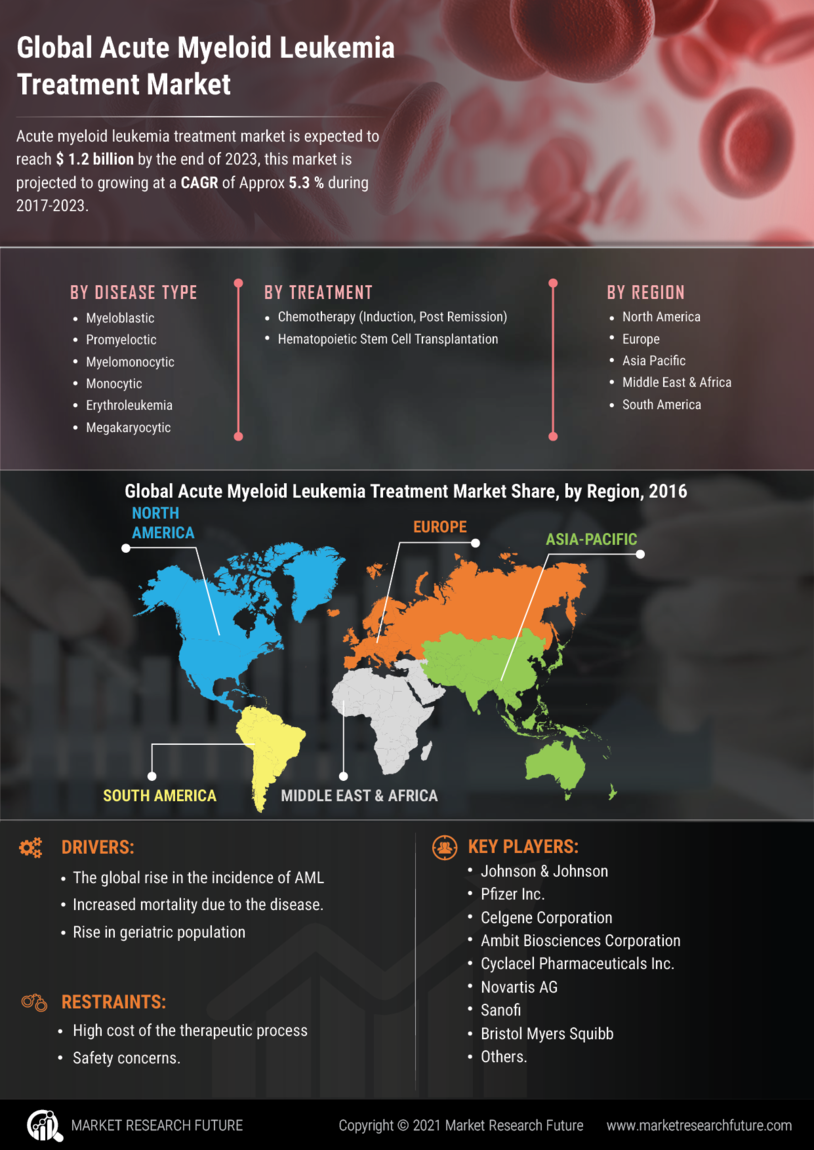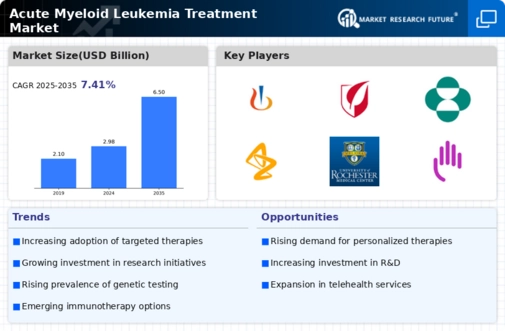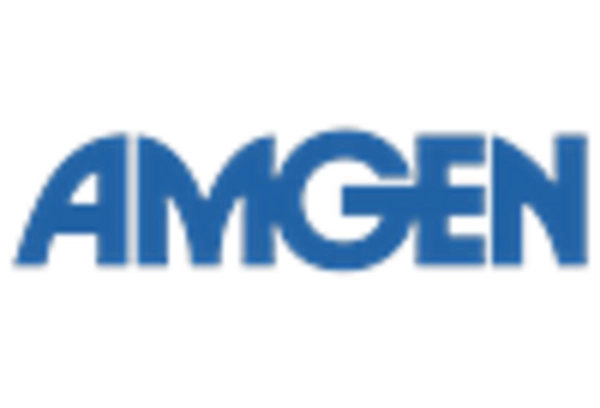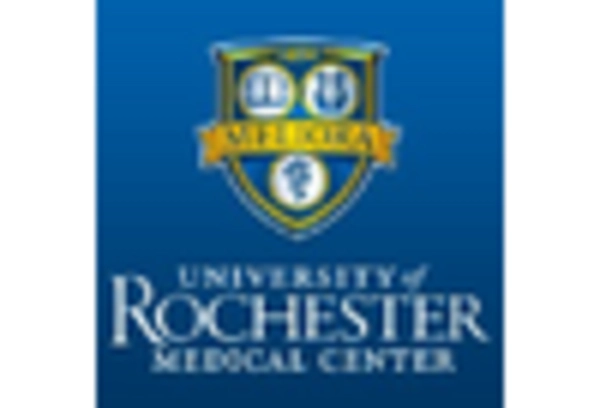Innovations in Treatment Modalities
Innovations in treatment modalities are significantly influencing the Acute Myeloid Leukemia Treatment Market. The advent of novel therapies, including targeted agents and immunotherapies, has transformed the therapeutic landscape for AML. For instance, the introduction of FLT3 inhibitors and IDH inhibitors has shown promising results in clinical trials, leading to improved patient responses. Furthermore, the integration of personalized medicine approaches allows for tailored treatments based on genetic profiling, enhancing efficacy. As these innovative therapies gain regulatory approval and enter the market, they are expected to drive competition among pharmaceutical companies. This competitive environment may lead to a broader range of treatment options for patients, ultimately benefiting the Acute Myeloid Leukemia Treatment Market by increasing accessibility and affordability of advanced therapies.
Investment in Research and Development
Investment in research and development is a critical driver for the Acute Myeloid Leukemia Treatment Market. Pharmaceutical companies and research institutions are increasingly allocating resources to explore novel therapeutic approaches and enhance existing treatments. This focus on R&D is evidenced by the growing number of clinical trials aimed at evaluating new drugs and treatment combinations for AML. In recent years, funding for AML research has surged, with millions of dollars directed towards understanding the disease's biology and identifying potential targets for therapy. Such investments not only foster innovation but also facilitate collaborations between academia and industry, further propelling advancements in treatment options. As a result, the Acute Myeloid Leukemia Treatment Market is likely to witness a continuous influx of new therapies, enhancing the overall treatment landscape.
Growing Awareness and Screening Programs
Growing awareness and screening programs for Acute Myeloid Leukemia are pivotal in shaping the Acute Myeloid Leukemia Treatment Market. Enhanced public awareness campaigns and educational initiatives by healthcare organizations have led to earlier detection of AML, which is crucial for effective treatment. Screening programs aimed at high-risk populations are becoming more prevalent, facilitating timely diagnosis and intervention. This proactive approach not only improves patient outcomes but also stimulates demand for treatment options. As more individuals are diagnosed at earlier stages, the market is likely to experience an uptick in the utilization of therapies. Consequently, the Acute Myeloid Leukemia Treatment Market is expected to benefit from this increased focus on awareness and early detection, leading to a more informed patient population seeking treatment.
Rising Incidence of Acute Myeloid Leukemia
The increasing incidence of Acute Myeloid Leukemia (AML) is a primary driver for the Acute Myeloid Leukemia Treatment Market. Recent statistics indicate that AML accounts for approximately 1.2% of all cancers, with an estimated 20,000 new cases diagnosed annually in certain regions. This rising prevalence necessitates the development and availability of effective treatment options, thereby propelling market growth. As the population ages, the risk of developing AML escalates, further contributing to the demand for innovative therapies. The urgency to address this growing health concern has led to increased investments in research and development, fostering advancements in treatment modalities. Consequently, the Acute Myeloid Leukemia Treatment Market is poised for expansion as healthcare providers seek to improve patient outcomes and survival rates.
Regulatory Support and Accelerated Approvals
Regulatory support and accelerated approvals for new therapies are significantly impacting the Acute Myeloid Leukemia Treatment Market. Regulatory agencies are increasingly recognizing the urgent need for effective AML treatments, leading to expedited review processes for promising therapies. This trend is exemplified by the recent approvals of several novel agents that have demonstrated substantial clinical benefits in AML patients. The ability to bring new treatments to market more swiftly not only addresses the unmet medical needs of patients but also encourages pharmaceutical companies to invest in AML research. As regulatory frameworks evolve to support innovation, the Acute Myeloid Leukemia Treatment Market is expected to experience accelerated growth, with a wider array of treatment options becoming available to healthcare providers and patients.

















Leave a Comment